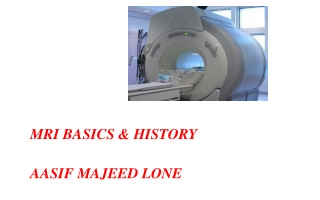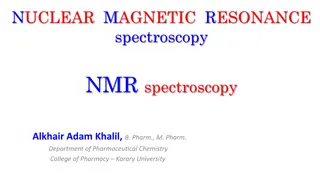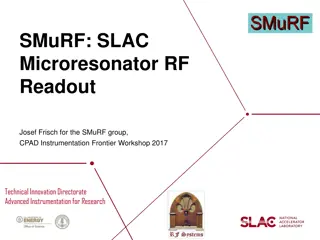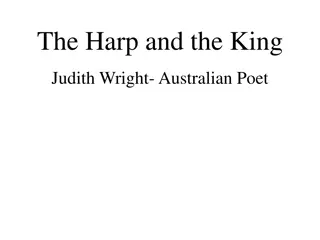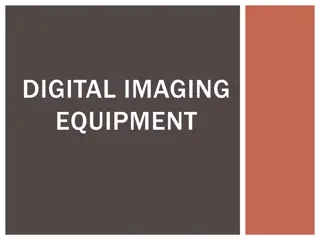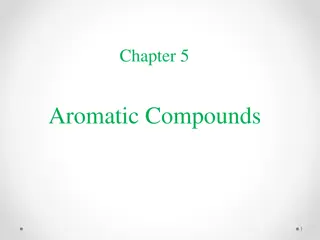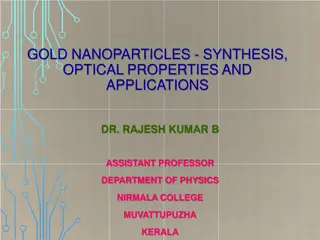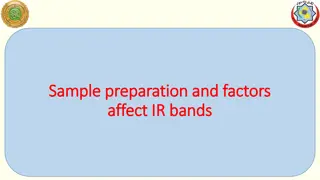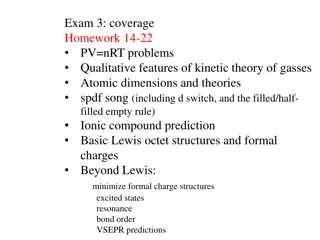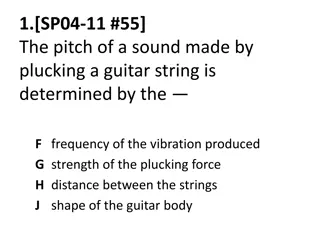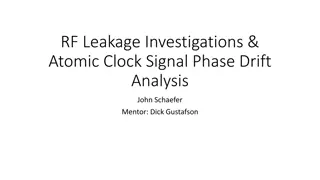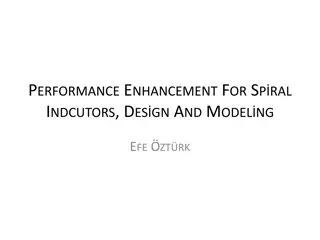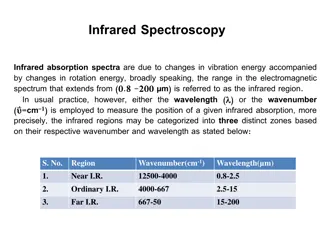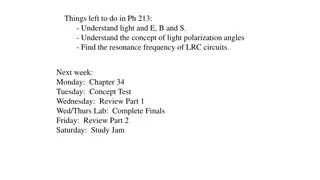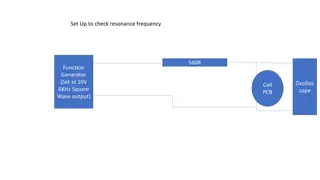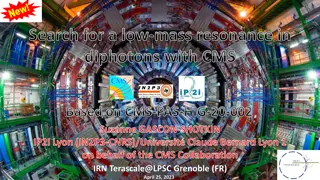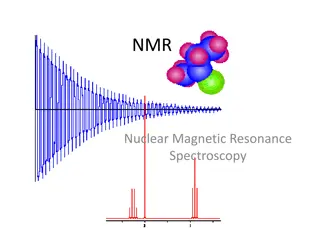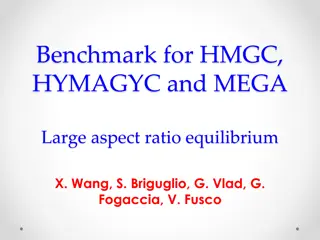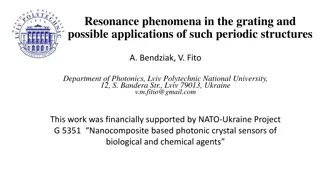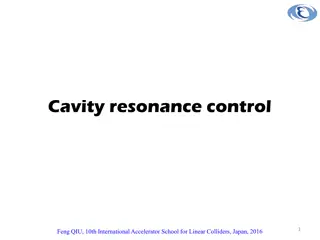MRI BASICS & HISTORY AASIF MAJEED LONE
Magnetic Resonance Imaging (MRI) has revolutionized medical imaging, offering detailed views of the body without harmful radiation. This article delves into the historical development of MRI, highlighting key milestones such as the discoveries of the Rotating Magnetic Field by Nikola Tesla and the w
9 views • 49 slides
Introduction to NMR Spectroscopy: A Powerful Tool for Structural Analysis
Nuclear Magnetic Resonance (NMR) spectroscopy is a vital technique in determining the structure of organic molecules. It complements IR and UV spectroscopies by providing a detailed map of the carbon-hydrogen framework. Understanding the physics behind NMR, such as nuclear spin and the effect of mag
6 views • 30 slides
Basic Principles of MRI Imaging
MRI, or Magnetic Resonance Imaging, is a high-tech diagnostic imaging tool that uses magnetic fields, specific radio frequencies, and computer systems to produce cross-sectional images of the body. The components of an MRI system include the main magnet, gradient coils, radiofrequency coils, and the
2 views • 49 slides
Radiographic Imaging Methods of the Respiratory System
Radiographic imaging plays a crucial role in the evaluation and diagnosis of thoraco-mediastino-pleuro-pulmonary conditions. Techniques like radioscopy, digital radiography, computer tomography, magnetic resonance imaging, conventional pulmonary angiography, and hybrid imaging methods offer detailed
10 views • 21 slides
Comprehensive Overview of Maxillary Sinus Anatomy and Function
The maxillary sinus, also known as the antrum of Highmore, is a key structure in the paranasal air sinuses. Described first in 1651, it plays a vital role in skull lightening, voice resonance, and air filtration. This pyramidal-shaped sinus is lined with Schneiderian membrane and has complex vascula
1 views • 41 slides
SMuRF: SLAC Microresonator RF Readout
SMuRF group at SLAC developed a cutting-edge RF readout system for cryogenic micro-resonators used in research. The system features cold resonators tuned with TES current and a flux ramp to eliminate 1/f noise. Key technical challenges include noise, linearity, wide bandwidth, and computation power.
3 views • 16 slides
Advanced Microscopy Techniques and Applications in Cell Biology
Explore the diverse world of advanced microscopy techniques in cell biology, from confocal and super-resolution imaging to Fluorescence Resonance Energy Transfer (FRET) microscopy and Fluorescence Recovery After Photobleaching. Discover the latest methods, considerations, and applications for studyi
3 views • 21 slides
Understanding Cleft Lip and Palate: Causes, Effects, and Management
Explore the nature, causes, and challenges associated with cleft lip and palate conditions, affecting 1 in 7 babies worldwide. Learn about the higher prevalence in certain populations and environmental influences during pregnancy. Discover the impact of clefts on speech, resonance, and emotional wel
4 views • 39 slides
Acoramidis Improves Cardiac Function in Transthyretin Amyloid Cardiomyopathy
Acoramidis, a next-generation TTR stabilizer, shows promising results in improving cardiac function and promoting regression in Transthyretin Amyloid Cardiomyopathy. The ATTRibute-CM Cardiac Magnetic Resonance Substudy evaluated changes in cardiac structure, function, and amyloid burden after treatm
0 views • 8 slides
Reflections on Time, Kings, and the Melancholy Harp
Delve into the poignant verses of Judith Wright's poetry, exploring themes of suffering, longing, and redemption through the lens of time, kingship, and the mystical presence of a haunting harp. Witness the evocative imagery as the old king seeks solace, the harp praises time, and the human soul is
0 views • 8 slides
Advanced Imaging Technologies in Healthcare
Explore the world of digital imaging equipment including computed tomography (CT) scanners and magnetic resonance imaging (MRI) machines. Discover how these technologies work, their uses in medical diagnosis, and important facts to consider. Learn about the risks associated with CT scans and the ben
0 views • 59 slides
Understanding Aromatic Compounds: Benzene and Its Structures
Aromatic compounds, specifically benzene and its derivatives, are central to organic chemistry. This summary delves into the resonance structures of benzene proposed by Kekulé, the orbital model for benzene, symbols representing benzene, and the aromatic character rules based on electron count. Thi
2 views • 25 slides
Understanding Waves: A Visual Exploration
Explore the fascinating world of waves through visually engaging images and interactive clickers. Learn about different types of waves, including longitudinal and transverse waves, and discover what waves carry - energy, not matter. Delve into the concepts of mechanical and electromagnetic waves, an
1 views • 37 slides
Understanding the Basics of 13C NMR Spectroscopy
Nuclear Magnetic Resonance (NMR) Spectroscopy is a powerful analytical tool used in chemistry to study the structure of molecules. This summary focuses on the application of 13C NMR spectroscopy, which provides valuable information about carbon atoms in a compound. The low natural abundance of carbo
0 views • 36 slides
NMR Applications in Organic Chemistry Research
NMR (Nuclear Magnetic Resonance) is a powerful technique used in organic chemistry research for a wide range of applications, including structure elucidation, identification of small molecules, quantitative analysis, and studying dynamics. Through various NMR experiments, researchers can determine s
1 views • 13 slides
Recent Advances in Gold Nanoparticles and Nanofluids Synthesis and Applications
Gold nanoparticles (AuNPs) and nanofluids are attracting significant interest due to their unique properties and diverse applications. This article discusses the synthesis methods, optical properties, and applications of gold nanoparticles, as well as the preparation techniques and characteristics o
2 views • 8 slides
Understanding NMR Spectroscopy and Chemical Shifts
Nuclear Magnetic Resonance (NMR) spectroscopy is a powerful technique for analyzing molecular structures based on the chemical shifts of protons. In an NMR spectrum, peaks correspond to different protons in a compound, with their positions, intensities, and spin-spin splitting providing valuable inf
0 views • 19 slides
Understanding Factors Affecting IR Bands in Sample Preparation
Learn about the importance of sample preparation in infrared spectroscopy, including techniques for solid sample preparation and the choice of solvents to obtain accurate IR spectra. Discover how factors like inductive and resonance effects influence IR frequencies in different functional groups.
1 views • 14 slides
Mechanisms and Models of Nuclear Reactions
The chapter discusses the reaction cross-section in nuclear reactions, including resonance and tunneling phenomena. It explains the probability of reactions occurring, the influence of nuclear radius on cross-section, and how tunneling allows reactions at energies lower than the Coulomb barrier. Exa
0 views • 22 slides
Understanding Aldehydes and Ketones in Organic Chemistry
Aldehydes and ketones are compounds that contain carbonyl groups (>C=O). Aldehydes have the CO group linked to either two hydrogen atoms or one hydrogen atom and one alkyl or aryl group, while ketones have the CO group linked to two alkyl or aryl groups. The structure of the carbonyl group is charac
0 views • 26 slides
Aromatic Hydrocarbons: Structure, Aromaticity, and Nomenclature
Aromatic hydrocarbons, with benzene as a key example, possess unique properties due to their highly unsaturated structures. The molecular formula of benzene is C6H6, and it exhibits resonance through a planar structure with sp2-hybridized carbons. To be classified as aromatic, a compound must have a
0 views • 19 slides
Exploring Contextual Ideas in Frankenstein by Mary Shelley
An analysis of contextual ideas related to the study of Frankenstein by Mary Shelley. Delve into the key connotations, connections with other literary texts, and the enduring resonance of a novel written almost 200 years ago. Understand the significance of the contexts in which literary texts are wr
0 views • 57 slides
Exploring Themes in The Kite Runner by Khaled Hosseini
Delve into the intricate relationships, societal reflections, and internal conflicts portrayed in Khaled Hosseini's novel "The Kite Runner." From childhood friendships to family dynamics, religious identity to moral ambiguity, the story unfolds against a backdrop of Afghanistan's changing landscape.
0 views • 28 slides
Comprehensive Overview of Lewis Model in Chemical Bonding
Examining the coverage of Exam 3 and final exam topics including PV=nRT problems, qualitative features of kinetic theory of gases, atomic dimensions, spdf song, ionic compound predictions, Lewis octet structures, formal charges, VSEPR theory predictions, oxyanion examples of resonance, and the signi
0 views • 19 slides
Understanding Electron Paramagnetic Resonance (EPR) and Molecular Symmetry
The discussion covers the relevance and applications of EPR spectroscopy in studying electron behavior, spin-orbit coupling effects, and molecular symmetry. Key concepts include anisotropy, nuclear spin coupling, and deviations in electron g-factors. It delves into how these factors impact the obser
0 views • 11 slides
Advanced Magnetic Resonance Imaging Components Gallery
Explore a collection of high-quality images showcasing various components used in advanced magnetic resonance imaging systems. From coils and yokes to formers and shells, get a detailed look at the intricate details of these essential parts. Each image provides a unique perspective on the technology
0 views • 15 slides
Understanding the Science of Sound and Its Effects
Explore the fascinating world of sound, from the basic principles of resonance to the transmission of vibrations and the effects of sound energy on human beings and the environment. Delve into the concept of pitch, decibel levels, and wave patterns of sound to gain a deeper understanding of how soun
0 views • 13 slides
Physics Concepts Illustrated with Images
Explore various physics concepts such as sound waves, light bending, resonance, wave velocity, and more through visually engaging images and related questions. Concepts like guitar string vibrations, compression waves, refraction of light, tuning fork vibration, and sound wave frequency are explaine
2 views • 22 slides
Exploring Connections Through Visual Art: Joan Macleod's Design Portfolio
Delve into Joan Macleod's mesmerizing design portfolio from August 2021, where she captivates viewers by respectfully collaborating with nature to evoke emotions, memories, and the essence of time and place. Through intricate visual themes, Macleod shares her personal resonance with the natural envi
0 views • 11 slides
RF Leakage Investigations & Atomic Clock Signal Phase Drift Analysis
RF signals ranging from 100 kHz to 150 MHz are utilized for achieving resonance in optical cavities. DC Ground Isolation Units help decouple DC grounds and shield leakage. Spectrum analysis using RF analyzers reveals peaks possibly from neighboring balun leakages. Solutions involve increasing capaci
0 views • 14 slides
Enhancing Spiral Inductors: Design, Modeling, and Performance Optimization
Understanding the importance of inductor parameters like inductance value, self-resonance frequency, and quality factor, this content explores loss mechanisms in inductors and ways to improve their quality. It delves into topics such as reducing phase noise in oscillators, minimizing insertion loss
0 views • 17 slides
Understanding Infrared Spectroscopy: An Overview of Vibration Energy and Spectral Regions
Infrared spectroscopy involves analyzing absorption spectra resulting from changes in vibration and rotation energy in molecules. The infrared region spans from 0.8 to 200 μm, with distinct zones categorized based on wavenumber and wavelength. Group frequencies and fingerprint regions offer detaile
1 views • 26 slides
Understanding E and B Fields in Physics 213
Explore concepts such as light polarization angles, resonance frequency of LRC circuits, Lorentz Force Law, Gauss Law, Faraday's Law, and Ampere-Maxwell Law in Physics 213. Delve into the interplay between electric and magnetic fields, and their effects on charged particles such as electrons and pro
0 views • 19 slides
Analysis of Resonance Frequency and Performance of 560R Coils
Utilizing a setup with a 560R coil, a function generator, and an oscilloscope, the resonance frequency was examined at 6KHz. Peak voltage variances were observed between OK and NOK coils, with resonance frequencies appearing consistent. Further analysis revealed significant differences in peak-to-pe
0 views • 7 slides
Search for Low-Mass Resonance in Diphotons with CMS
A search for a standard model-like Higgs boson in the mass range of 70-110 GeV in diphoton final states in proton-proton collisions at √s = 13 TeV using Full LHC Run 2 data was conducted by Suzanne Gascon-Shotkin and the CMS Collaboration. Motivated by previous results and theoretical models, the
0 views • 15 slides
Understanding Nuclear Magnetic Resonance Spectroscopy
Nuclear Magnetic Resonance (NMR) Spectroscopy has revolutionized the structural analysis of organic compounds over the past fifty years. By aligning nuclear spins with an external magnetic field and exploring the energy states of spin systems, NMR provides valuable insights into molecular structures
0 views • 26 slides
Understanding Magnetic Resonance Imaging (MRI)
Magnetic Resonance Imaging (MRI) is an imaging technique based on nuclear magnetic resonance principles. It was first developed in the 1970s by Paul Lauterbur and Peter Mansfield. MRI uses the interaction between protons in the body and magnetic fields to create detailed images. This technology has
0 views • 77 slides
Comparative Analysis of MHD-Kinetic Codes for Large Aspect Ratio Equilibrium
The study presents a benchmark comparison of HMGC, HYMAGYC, and MEGA codes focusing on their hybrid MHD-kinetic nature in large aspect ratio equilibriums. The analysis explores the relative stability of two types of EPMs at varying nH values, concluding with results on mode frequencies and growth ra
0 views • 9 slides
Resonance Phenomena in Grating Structures and Applications
Resonance phenomena in grating structures, such as dielectric or metal gratings on substrates, offer sensitive elements for detecting biological and chemical agents. The sensitivity of these structures is described by equations relating to resonant wavelength changes and the refractive index of inve
0 views • 20 slides
Cavity Resonance Control in Linear Colliders: An Overview
Feng QIU discusses cavity resonance control techniques for Linear Colliders in this presentation. Topics include cavity voltage, phase, piezoelectric control, and stabilization of the RF field to optimize performance. The content emphasizes the importance of managing cavity resonances effectively to
0 views • 21 slides
